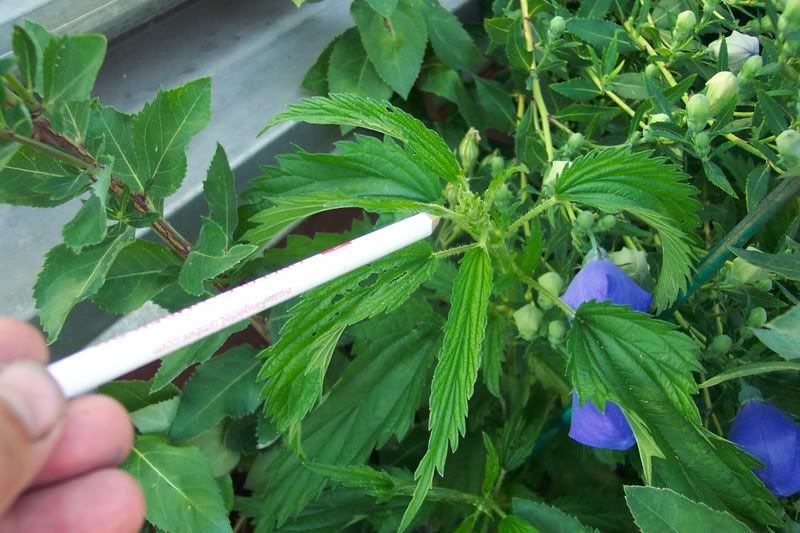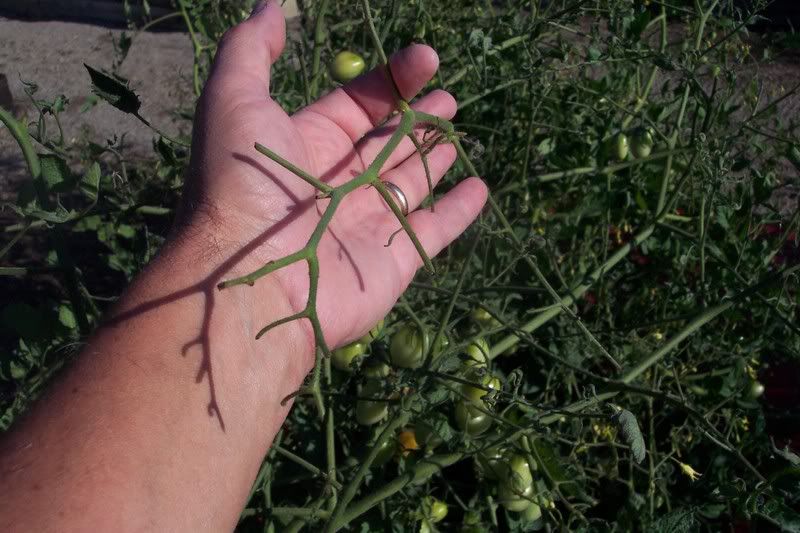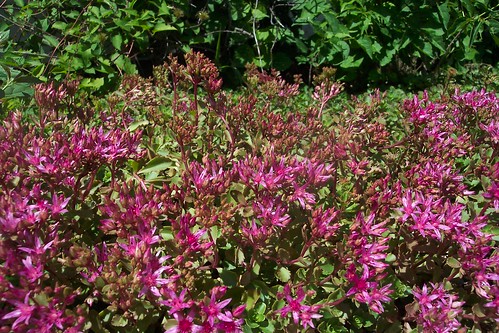Our Balloon Flowers (Platycondon) always seem to get top heavy with flowers and fall over, so we took some time today to stake and tie them up.

While in the middle of tying the first stem, I felt a strange sensation on my finger that quickly turned to a sharp burning pain. I had felt this pain a few times in the past and knew what it was immediately… I had unknowingly brushed against a leaf of a stinging Nettle plant.

I was quickly reminded that,in that spot of the flower bed, I often find Stinging Nettle. Most years, I just put on some gloves and pull them out…that’s usually the end of them for the season. I just completely forgot about them.
Our Nettles have long, narrow leaves with fuzzy-looking small hairs all over the plant. It really just looks like a “generic” weed. I’ll tell you what, though, once you get introduced to it like that, you learn to recognize the subtle characteristics of the plant in a hurry.
The fuzzy hairs that you see are actually very small needles made out of pure glass! The needles are so thin, that when you brush against them, the tips break off and become very sharp (as broken glass tends to do), penetrate your skin and irritating chemicals are released, causing the pain and irritation.
(Take a close-up look at those needles by clicking here)
Fortunately, the worst of the pain is gone in about twenty minutes (I timed it). By the time a hour has passed, your skin just feels “tingly”. I must say that my hand stills feels a little “funny” 8 hours later.
I took this as an opportunity to educate my garden helpers about the perils of Stinging Nettle. Of course the first question asked was “how bad does it hurt?”. Trying to describe the sensation in words was just not working, so I invited them to try it for themselves. There were no takers until I rubbed a small spot on the back of my hand with a piece of nettle leaf. (I don’t advise this “hands on” approach to teaching, however). Still no takers… and these were the same guys who just a few weeks ago, were brave enough to chomp down on their first Habanero Pepper! Hmm… maybe they learned some thing from that experience.
Anyway, one did end up trying it on the back of his hand only because a friend of his from Kashmir told him about how parents use it in the old country to discipline their children… talk about differences in parenting techniques !
The Nettle is gone now but not forgotten.
Bob

 When you see this, the Horn Worms are close by. Usually, they feed toward the top of the plant, but not always.
When you see this, the Horn Worms are close by. Usually, they feed toward the top of the plant, but not always.





